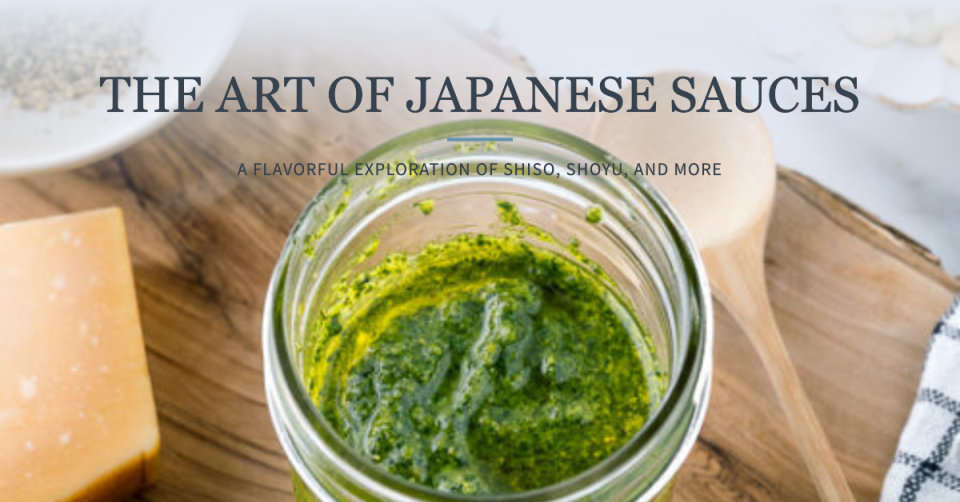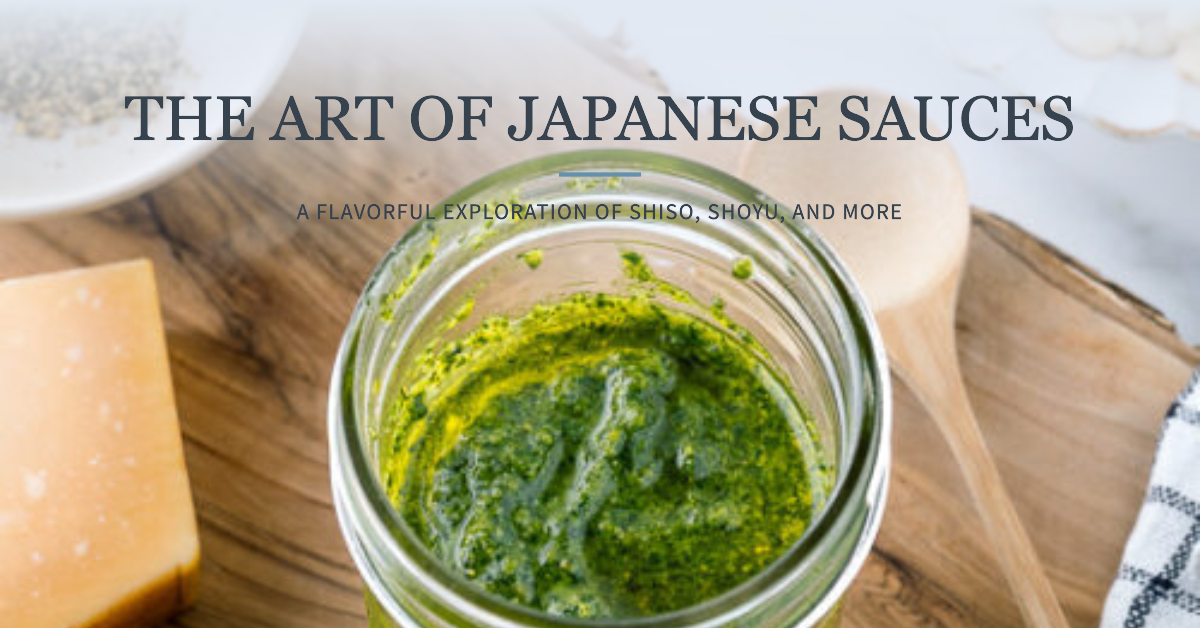Japanese cuisine is renowned for its delicate flavors and artful presentation. An essential component of many Japanese dishes are the unique and tasty sauces that complement and elevate the ingredients. In this article, we’ll explore some of the most popular and iconic Japanese sauces, from the refreshing shiso to the umami-rich shoyu.

What is the Green Sauce Served with Soba Noodles?
A vibrant green sauce is often served drizzled over chilled soba noodles in the summer months. This sauce provides a cooling contrast to the hot buckwheat noodles.
The main ingredient in this sauce is shiso, also known as perilla or beefsteak plant. Shiso is a member of the mint family and has a distinctive flavor that is a cross between basil, mint, and cumin. It is cooling and refreshing.
To make shiso sauce:
- Blend shiso leaves, soy sauce, mirin, rice vinegar, sesame seeds, and chili oil in a food processor.
- Adjust ingredients to taste. The sauce should have a balance of sweet, salty, spicy, and sour flavors.
- Serve chilled over cooked soba noodles and garnished with julienned shiso leaves.
The herbal shiso pairs beautifully with soba’s nutty flavor. The sauce is a perfect summer refresher!
The Importance of Shoyu in Japanese Cuisine
Another quintessential Japanese sauce is shoyu – also known as soy sauce. Shoyu is brewed from soybeans, wheat, salt, and koji mold. It has a complex umami flavor and is used to season everything from sushi rice to grilled meats in Japanese cooking.
I learned the importance of shoyu firsthand when I was learning to make tamagoyaki (Japanese rolled omelet) in a cooking class in Tokyo. My first attempt completely lacked flavor. My sensei gently corrected me – I had forgotten the shoyu! With just a dash of soy sauce, the egg came alive with a rich, savory taste.
Shoyu is truly the heart and soul of Japanese cuisine. Just a small amount can enhance and balance flavors. Pay attention to how shoyu is used in authentic Japanese recipes – the quantity and application is key. With its umami depth, shoyu can make ingredients shine.
Experimenting with New Flavors
Part of the joy of cooking is discovering new flavor combinations. As I explore Japanese sauces like shiso and shoyu, I look forward to experimenting by blending them with ingredients from other cuisines. Maybe a Thai peanut shiso sauce over noodles? Or cooked lentils dressed with a shoyu vinaigrette? The possibilities are endless.
Understanding the traditional usages of sauces like shoyu helps you appreciate their nuanced flavors. With this knowledge, you can then start improvising new fusions in your own cooking. Staying true to the authentic spirit while applying your own creativity leads to the best flavor discoveries.
So explore the world of Japanese sauces – and have fun tasting and blending these dynamic flavors into your own signature dishes!

